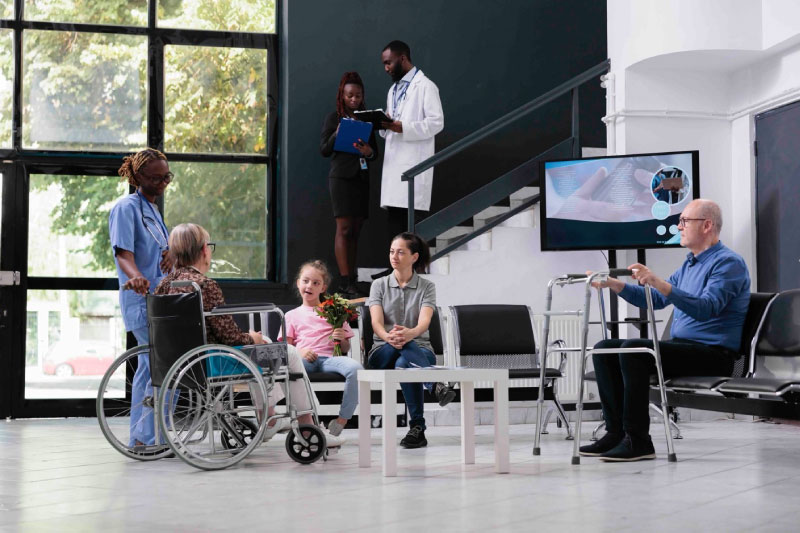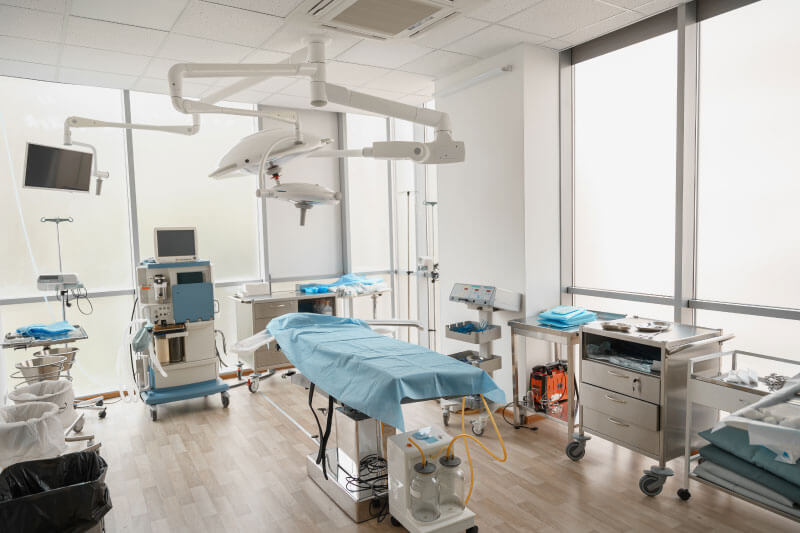Contents
Healthcare settings are complex systems with many moving parts. Countless assets need to be tracked, from medical equipment to patient records. At the same time, healthcare workers are constantly on the move, caring for patients and performing vital tasks.
If a healthcare facility is unable to properly track its assets and employees, it can quickly become chaotic. Patient care may suffer, and critical assets may be misplaced or damaged. In extreme cases, lives may even be at risk.
That’s why it’s so important for healthcare operations to have a well-planned system for tracking their assets and employees. By doing so, they can ensure that patient care is not compromised and that all of their valuable assets are accounted for.
What is RTLS for hospitals?
To ensure there is no compromise of any kind in medical operations and ground maintenance, asset tracking is a crucial element that needs ideal implementation. That’s where a real-time location system serves its purpose.
Healthcare RTLS systems can be used to track a wide range of assets, from medical equipment to IV pumps. They can also be used to track employee whereabouts, which can be especially helpful in a large healthcare facility. The real-time asset tracking data can be used to improve patient care by reducing wait times and improving communication between caregivers.
By giving you greater visibility into the comings and goings of both employees and assets, real time location system hospital solutions can help you run your healthcare operation more efficiently. Furthermore, by understanding how their resources are being used, hospitals can improve efficiency and reduce costs.
What are the common problems encountered in hospitals that increase the cost of operations?
Hospital systems have an unspoken rule about always being vigilant and aware of patient flow and needs. With nurses and workers running around doing their best to ensure efficient patient care, asset tracking becomes the most crucial issue of interest.
Here are a few common problems that hospitals need to deal with concerning the rising cost of operations.
Lack of coordination between various departments
One of the biggest problems facing hospitals today is a lack of coordination between various medical departments. This can lead to duplication of services, unnecessary tests and procedures, and a general waste of resources.
The root cause of this problem is often a lack of communication between doctors, nurses, and other medical staff. As a result, inefficient use of medical equipments only increases operating costs.

Inefficient inventory management
There are several reasons for this, but the most common ones are: ordering too many of the wrong items, not enough of the right items, expired items, and lost or damaged items. While some of these problems can be attributed to human error, others are simply the result of inefficient systems.
For example, many hospitals still rely on paper-based inventory systems, which are prone to errors and can be time-consuming to update. Additionally, hospital staff may not have adequate training in inventory management and hospital equipment tracking system, which can lead to ordering mistakes or not adhering to best practices for storage and rotation.
Outdated equipment
Outdated equipment can lead to inaccurate diagnoses, longer surgery times, and a decrease in the quality of care overall. Additionally, outdated equipment often requires more maintenance, which can further increase the cost of operations for a hospital.
Outdated facilities/working conditions
Outdated healthcare facilities are a common problem in hospitals that can increase the cost of operations. In many cases, these facilities are not up to code and do not meet the needs of modern patients. As a result, they often require more staff and resources to maintain, and they can also pose safety hazards.
In addition, outdated facilities can make it difficult to attract and retain qualified staff. This is because most medical professionals want to work in clean, safe, and up-to-date facilities. As a result, outdated healthcare facilities often lead to higher costs and lower quality of care.
Equipment overspending
One of the most common problems faced by hospitals is equipment overspending. This occurs when a hospital purchases more equipment than it needs or can afford. For example, a hospital may find it convenient to have multiple hospital equipment of the same kind available on every floor simply to avoid the hassles of locating misplaced equipment when needed.
Oftentimes, the hospital ends up with unused or underutilized equipment, which can be a financial burden. In addition, equipment overspending can lead to a number of other problems, such as overcrowding, storage issues, and maintenance difficulties.
Lost assets like wheelchairs, etc.
One of the most common problems that hospitals face is the loss of assets. Items like wheelchairs, IV pumps and even patient records can easily be misplaced or stolen. This not only adds to the cost of operations but can also cause a disruption in care.
In some cases, patients may have to be transferred to another facility if their records cannot be located. In other cases, surgeries may have to be delayed while new equipment is sourced.
How can an RTLS system help bring the cost down for hospitals?
The core benefit that RTLS technology offers to healthcare centers is asset tracking through accurate radio frequency identification tags and sensors. This technology can precisely locate and display the exact location of every object and personnel in real time, making hospital operations efficient and swift.
Here are some of the key capabilities of an RTLS for hospitals that will help cut down on unnecessary costs for hospitals.

Asset management
Real-time location systems (RTLS) have been touted as a game-changer for hospital asset management. By automating the tracking of medical devices, supplies, and people, an RTLS hospital solution can help improve efficiency, optimize workflow, and prevent losses.
But perhaps most importantly, a healthcare RTLS system helps to reduce the cost of care. By reducing the need for manual searches and improving inventory control, RTLS can free up staff time and resources that can be redirected to other areas of the hospital.
In addition, RTLS for hospitals can help prevent hospital equipment downtime by providing real-time visibility into the location data and status of assets with the RTLS hospital equipment tracking system. As a result, healthcare RTLS can play a vital role in helping hospitals to reduce costs and improve patient care.
Workflow optimization
By tracking the location of staff, equipment, and patients in real-time, the healthcare RTLS system enables hospitals to get a granular understanding of how their operations are running and identify potential bottlenecks.
This information can then be used to make adjustments to the workflow to improve efficiency and reduce costs. In addition, healthcare RTLS can also be used to automatically route staff and patients to the appropriate locations, further reducing the need for manual input and increasing efficiency.
Why Litum is the best at providing RTLS for hospitals
As the healthcare industry is increasingly embracing digital technologies, healthcare RTLS technologies are poised to play an increasingly important role in improving patient outcomes and reducing costs.
At Litum, we understand that healthcare organizations have unique needs when it comes to indoor location tracking. That’s why we offer a comprehensive range of RTLS solutions that can be customized to fit the specific needs of any hospital.
From tracking assets and patient flow to managing staff and patient safety, our RTLS for hospitals solutions can help improve the efficiency and quality of care while reducing costs. In addition, our solutions are designed to be scalable and flexible, so they can grow with your hospital as your needs change.
With Litum, you can be confident that you’re getting the best possible RTLS for healthcare solutions for your hospital. Contact us today to learn more about how we can help you transform your operations.



